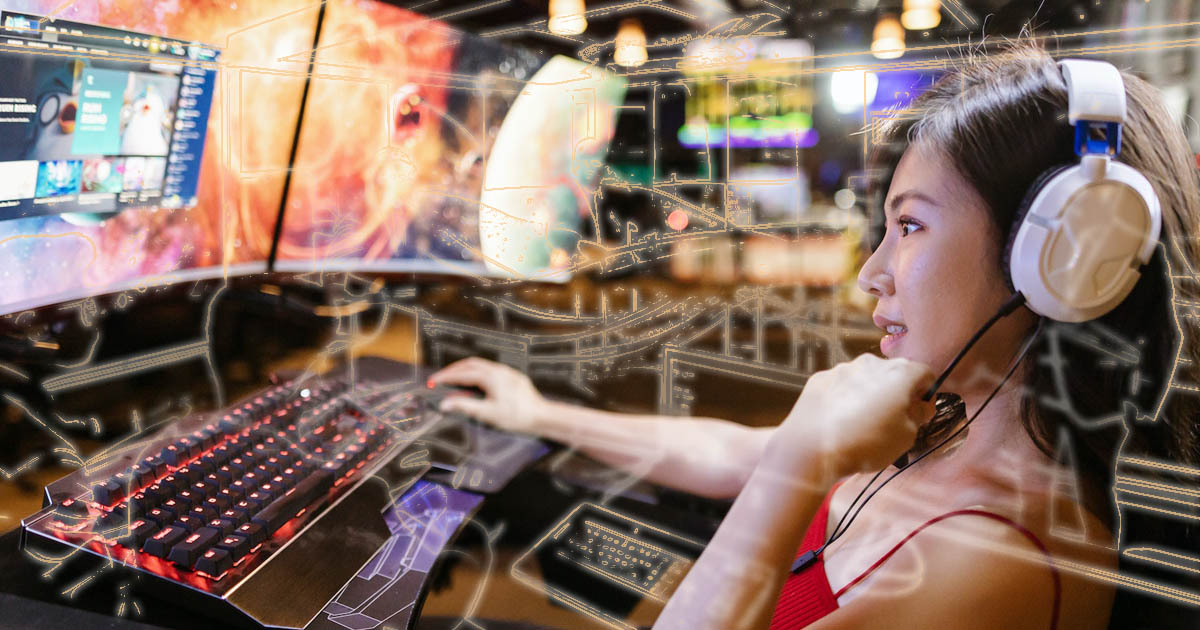In the ever-evolving domain of technology, the integration of artificial intelligence (AI) has emerged as a powerful catalyst poised to revolutionize the architectural, engineering, and construction (AEC) industries. As AI rapidly advances, its transformative impact on these sectors becomes increasingly evident. With its ability to automate labor-intensive tasks, optimize processes, and augment human creativity, AI holds the potential to reshape the landscape of AEC in profound ways. The emergence of AI in the AEC realm heralds a new era of possibilities, where intelligent systems collaborate with human ingenuity to drive innovation, efficiency, and sustainability. Nowhere is this transformation more pronounced than in the dynamic real estate industry of the Philippines. The fusion of AI and AEC promises to unlock unprecedented opportunities for growth and development. This exciting convergence invites us to explore the current scenario of AI in the AEC industry in the Philippines. It offers many potential applications. The groundbreaking technology may reshape the real estate landscape in the country. It will pave the way for a future that blends human expertise with the power of AI.
National AI Roadmap In The Philippines
Innovators first proposed that computers could imitate human intelligence at the midpoint of the 20th century. And artificial intelligence has had a long and rich history since then. Over the years, AI has evolved from simple rule-based systems to sophisticated machine learning algorithms that can learn from experience. Globally, AI has become a force to reckon with, finding applications in diverse fields such as healthcare, finance, and transportation. While AI adoption might have been slow initially in the Philippines, there has been a significant push in recent years. The government even launched the National AI Roadmap to accelerate AI innovation and adoption.
The Current Scenario of AI in the Architectural, Engineering, and Construction Industries
In the AEC industries, AI enhances various processes, from design and planning to construction and maintenance. For instance, AI-powered design tools allow architects to create more efficient and innovative designs. At the same time, AI-based project management software can help keep construction projects on schedule and within budget. In the Philippines, the adoption of AI in these industries is still in its nascent stages but is steadily growing. Companies are starting to recognize the potential benefits of AI and are increasingly integrating it into their operations.
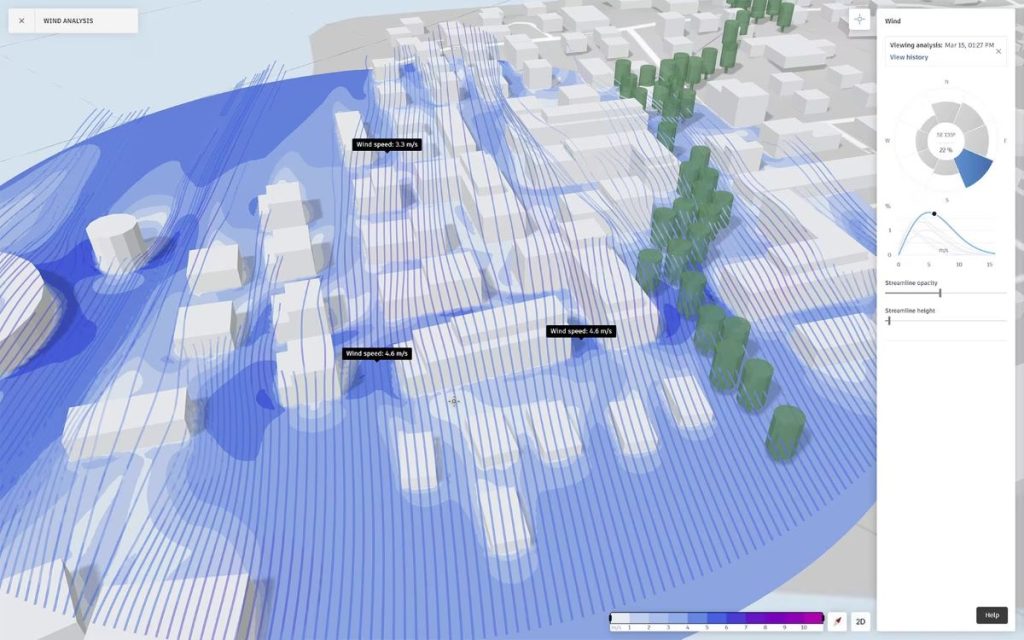
AI for Urban Development
Autodesk Forma is a cloud-based AI and generative design software that helps planning and design teams make more informed decisions faster. Forma can scrutinize up to 100 criteria across city blocks, such as zoning, views, daylight, noise, wind, roads, traffic, etc. In a case study, a development in Oslo, Norway, used Forma to refine noise and daylight levels, which reduced the noisiest residential facades by 10% and decreased low-light residential areas by more than 50%.
AI for Better Bidding
ConXtech, a modular-construction company, worked with Autodesk Research to develop a prototype bidding platform that uses AI to find the most cost-efficient structural steel design. This platform uses AI agents to set a site’s structural grid, predict the size of beams and columns, and refine structures to decrease construction costs, factoring in local building codes.
AI for Volumetric Design and Planning
Japanese company Obayashi worked with Autodesk Research to create an AI solution that generates volumetric estimates and interior programming layouts. The AI tool can understand abstract relationships between programs and the desired connectivity, size, and proportion expressed in a building’s volume. This technology allows designers or builders to provide prospective clients with a concise draft of what their building might look like.
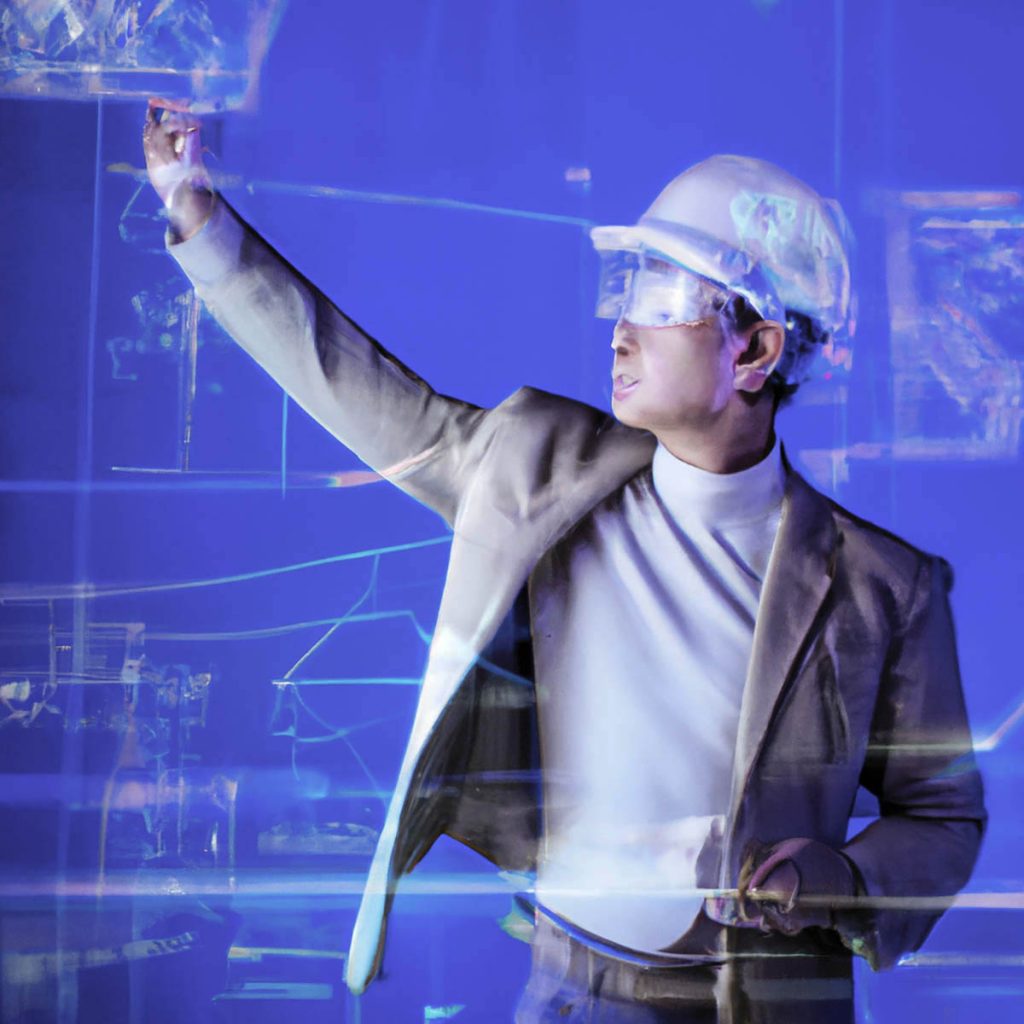
Advantages of AI in AEC
AI offers several advantages in the AEC industry:
- It can significantly improve efficiency and productivity. For example, AI can automate repetitive tasks, freeing human workers for more complex tasks.
- AI-powered predictive analytics can help pinpoint potential issues before they become major problems, saving time and resources.
- AI can enhance design capabilities. AI algorithms can generate numerous design alternatives quickly, allowing architects to choose the most suitable one.
- AI can improve safety measures by predicting and preventing accidents.
- AI can lead to substantial cost savings, especially in the long run.
Despite the high initial investment required, efficiency, productivity, and safety improvements can result in significant savings. Several real-life examples and case studies further illustrate these advantages.
Disadvantages of AI in the Architectural, Engineering, and Construction Industries
Despite the numerous advantages, the use of AI in the AEC industries also has several disadvantages. One significant concern is job displacement. As AI automates more tasks, there’s a fear that many jobs, especially those involving repetitive tasks, could become obsolete. Secondly, the high initial investment required for AI technologies can be a barrier for many companies, particularly small and medium-sized enterprises. Thirdly, there’s a risk of becoming overly dependent on technology. Any technical issues or cyber-attacks could severely disrupt operations. Various real-life examples and case studies highlight these potential pitfalls.
Ever Heard Of Seismic Cloaking?
Seismic cloaking, also called seismic invisibility, is a concept that involves using materials and systems to manipulate seismic waves, effectively protecting physical structures from damage during earthquakes. The notion is analogous to the idea of “invisibility cloaks” in light-based technologies, where the system manipulates light waves to render an object invisible. Seismic cloaking utilizes specially designed structures or materials that can divert seismic waves, causing them to behave as if the protected structure wasn’t there. The technology achieves this by controlling the propagation of seismic waves to avoid interaction with the buildings, thus preventing damage.
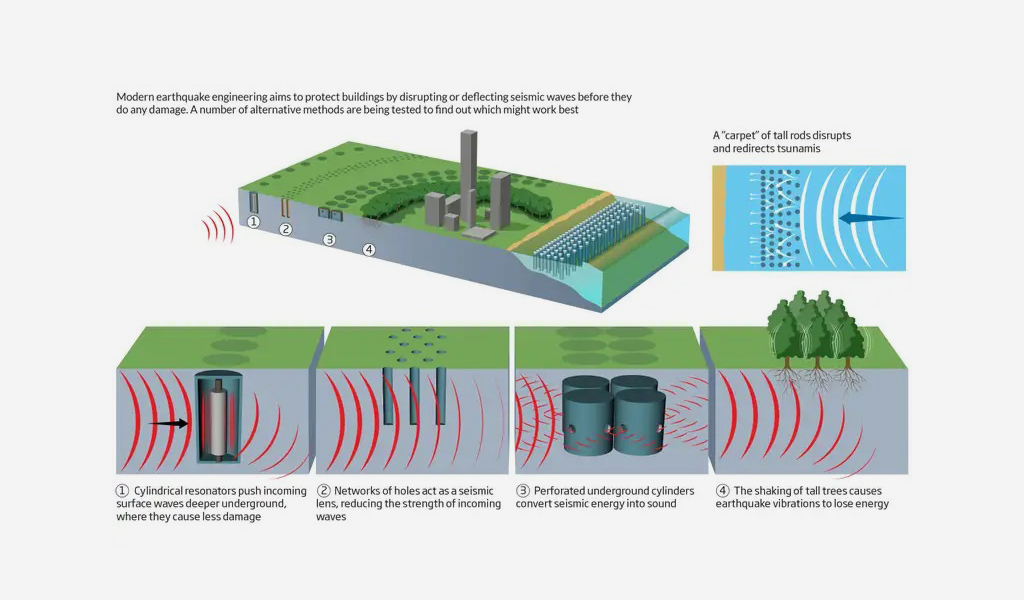
The available information could be more extensive when applying artificial intelligence in seismic cloaking. However, AI can be integral in designing and implementing seismic cloaking techniques. For instance, engineers can leverage AI to develop more effective seismic cloaking designs by predicting how different materials and structures will interact with seismic waves. It can also help optimize these designs to provide the best protection for specific types of buildings in particular locations.
Predictive AI For Resilient Building Design in AEC
One example of how designers use AI in the AEC industry is using Machine Learning algorithms to predict the structural behavior of buildings in response to different types of loads, including seismic loads. Engineers can evaluate multiple building design scenarios, thus facilitating the design of more resilient structures.
Further examples of AI applications in AEC include using artificial intelligence in combination with Virtual Reality (VR), Augmented Reality (AR), and Metaverses. For instance, these technologies can create detailed and immersive virtual models of proposed construction projects. They allow the identification of potential issues addressed before construction begins. They can also be used for training, helping workers develop the necessary skills in a safe and controlled environment.
BIM with AI and VR, AR, Metaverses
Building Information Modeling (BIM) is a digital process that involves creating and managing a 3D model of a building or infrastructure project. It integrates various data and information related to the project, such as design specifications, construction details, material quantities, and facility management data. BIM enables collaboration and coordination among project stakeholders, improves project visualization, and enhances decision-making throughout the project lifecycle.
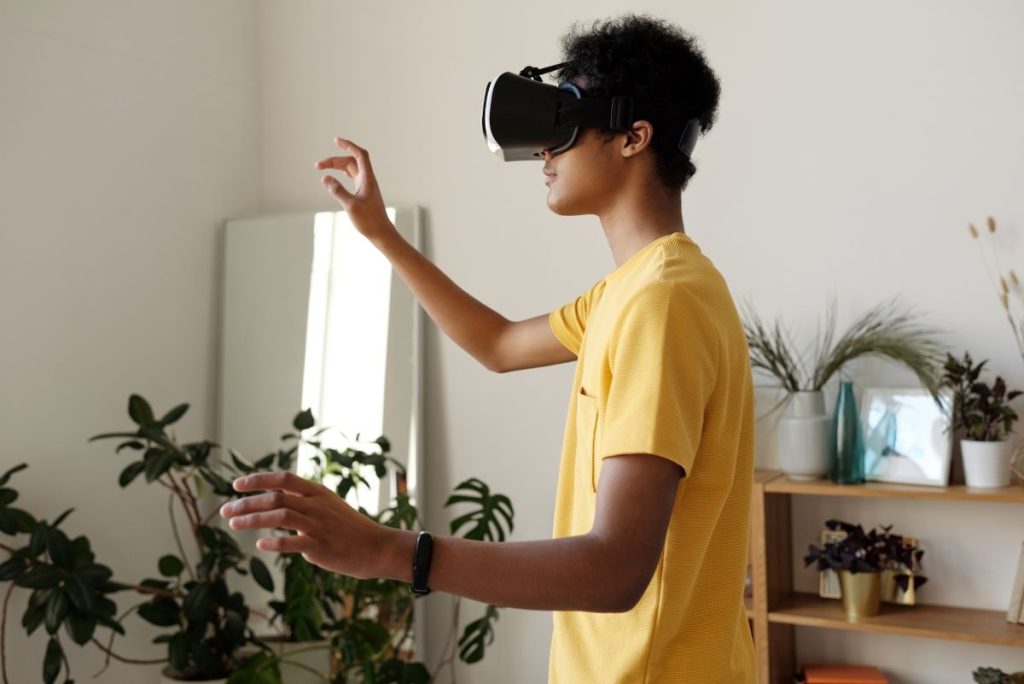
Today, artificial intelligence (AI) is increasingly integrated with BIM to enhance its capabilities further and improve efficiency in the Architecture, Engineering, and Construction (AEC) industry. Machine learning and computer vision are applied to analyze and extract valuable insights from the vast data within BIM models. Here are some examples of how the AEC industry integrates AI with BIM:
Automated Design Analysis: AI algorithms can analyze BIM models to identify design flaws, clash detections, and potential construction issues. By automating these analyses, AI can help architects and engineers identify and address design problems more efficiently. This feature reduces the need for manual checks and revisions.
Optimized Resource Allocation: AI algorithms can analyze BIM data to optimize resource allocation during construction. For example, by considering factors such as material availability, cost, and project schedule, AI can provide recommendations on the most efficient allocation of resources, leading to cost savings and improved project timelines.
Intelligent Energy Analysis: AI can leverage BIM data to perform energy analysis and simulation, helping architects and engineers optimize building energy performance. AI can provide insights into energy consumption patterns by analyzing building orientation, insulation, and HVAC systems and recommend energy-efficient design strategies.
Virtual Reality (VR) and Augmented Reality (AR) Visualization: AI-powered BIM models can be integrated with VR and AR technologies to provide immersive and interactive experiences. Stakeholders can visualize and explore the building design in virtual or augmented environments, enabling better communication, design validation, and decision-making.
Metaverse Integration: Metaverses, virtual worlds that merge physical and digital realities, can benefit from AI-integrated BIM. AI algorithms can analyze BIM data and create digital representations of real-world buildings and infrastructures within the metaverse. This integration enables virtual collaboration, real-time data updates, and simulations of various urban planning and facility management scenarios.
By combining tools for architecture with AI technologies, the AEC industry can benefit from improved design efficiency, enhanced collaboration, reduced construction errors, optimized resource utilization, and better-informed decision-making.

Future Implications of AI in AEC Philippines
Looking ahead, AI is poised to revolutionize the AEC industries further. Advancements in AI technologies such as generative design, digital twins, and autonomous construction equipment hold immense potential. These developments could lead to more efficient design processes, more accurate project management, and safer construction sites. In the Philippines, these developments could significantly impact these industries, providing increased competitiveness and growth opportunities. However, they also present challenges. Such include the need for skilled workers capable of working with these advanced technologies. As well as regulatory frameworks to ensure AI’s responsible and ethical use.
AI in the AEC industries in the Philippines
Artificial intelligence can profoundly transform the architectural, engineering, and construction industries. While the use of AI in AEC in the Philippines is still in its early stages, the impact is increasingly noticeable. The advantages, such as improved efficiency, enhanced design capabilities, improved safety, and cost savings, are significant. However, the disadvantages must be addressed, including job displacement concerns, high initial costs, and dependence on technology. Detailed case studies offer valuable insights into the practical application of AI in these industries. Looking ahead, the potential future developments of AI promise further changes, bringing both opportunities and challenges. As we continue to navigate the age of AI, it is crucial to approach it with a balanced perspective. It would be wise to acknowledge its potential benefits and associated risks. AI’s journey in the Philippines’ AEC industries is just beginning. It will be fascinating to see how it unfolds.
